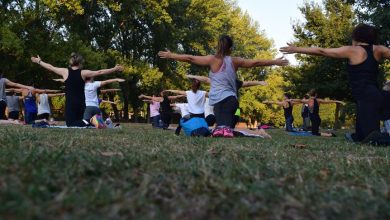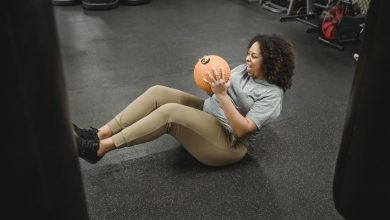Discover the Ultimate Beginner's Guide to Strength Training

Are you ready to embark on a transformative journey? Look no further! The ultimate beginner's guide to strength training is here to guide you every step of the way. Whether you're a total novice or have dabbled in fitness before, this guide will provide you with the knowledge and tools to kickstart your journey. Discover the foundations of strength training, different types of workouts, and recommendations for programs that suit your goals. Get ready to unleash the strength within you!
Key Takeaways
- Movement of any weight against resistance is the foundation of strength training.
- Bodyweight training is a great starting point for anyone.
- Dumbbell training is a versatile option for weight training.
- Choosing the right strength training program is important for consistent progress.
The Benefits of Strength Training for Beginners
Discover the many benefits you can experience by starting strength training as a beginner. Strength training offers a multitude of advantages, especially for older adults. It helps increase muscle strength and endurance, which can combat age-related muscle loss. By engaging in regular strength training, you can improve bone density and reduce the risk of osteoporosis. Additionally, strength training boosts metabolism, aiding in weight management. It also enhances overall physical performance and functional ability, making everyday tasks easier. Moreover, strength training has been shown to reduce the risk of chronic diseases such as heart disease and diabetes. To prevent injuries during strength training, it is crucial to focus on proper form and technique. Gradually increasing weight and following recommended guidelines from the National Strength and Conditioning Association (NSCA) can help ensure safety and prevent injuries.
Different Types of Strength Training for Beginners
If you're a beginner, you can explore different types of strength training, such as bodyweight training and dumbbell training. Bodyweight training is a great starting point for anyone, as it allows you to use your own body as resistance. This type of training has many benefits, including improving neuromuscular communication and motor unit recruitment. It also allows you to scale the difficulty of exercises, leading to significant strength gains. On the other hand, dumbbell training is a versatile option for weight training. Dumbbells are widely available in most gyms and are compact enough for home use. They can add difficulty to bodyweight exercises, help identify muscle imbalances, and require stabilization. Additionally, dumbbells allow for single-arm and single-leg exercises, providing a range of exercises to target different muscle groups.
| Bodyweight Training | Dumbbell Training |
|---|---|
| Improves neuromuscular communication and motor unit recruitment | Widely available in most gyms |
| Allows for scaling the difficulty of exercises | Compact and suitable for home use |
| Significant strength gains | Adds difficulty to bodyweight exercises |
| Convenient and natural | Identifies muscle imbalances and requires stabilization |
Choosing the Right Strength Training Program
When starting your strength training journey, consider researching and comparing different programs to find the one that best suits your goals and preferences. It's important to choose a program that aligns with your fitness level, available equipment, and time commitment. Here are some common mistakes to avoid and the importance of rest days:
- Avoid jumping into an advanced program: Starting with a program that is too challenging can lead to injury and burnout. Begin with a beginner-friendly program and gradually increase the intensity as you build strength and confidence.
- Don't neglect rest days: Rest days are crucial for muscle recovery and growth. Overtraining can lead to decreased performance and increased risk of injury. Make sure to include rest days in your training schedule to allow your muscles to repair and rebuild.
- Choose a program that includes variety: A well-rounded strength training program should include a mix of compound exercises, isolation exercises, and different training techniques. This variety helps prevent plateaus and keeps your workouts engaging and effective.
- Consider your long-term goals: Whether you're aiming for muscle gain, fat loss, or overall fitness improvement, choose a program that aligns with your goals. Look for programs that provide progressive overload and offer options for customization based on your specific needs.
Sets and Reps for Beginners in Strength Training
To optimize your strength training progress as a beginner, it is important to understand the appropriate sets and reps for each exercise. Sets and reps refer to the number of times you perform an exercise and the number of repetitions within each set. For beginners, it is recommended to start with 2-3 sets of 8-12 reps for each exercise. This range allows you to build both strength and endurance. It is crucial to listen to your body and avoid common mistakes such as overtraining or not giving yourself enough rest and recovery time. Rest and recovery are essential for muscle growth and preventing injuries. Remember to pace yourself, gradually increase the intensity, and prioritize proper form over heavy weights. By following these guidelines, you can safely and effectively progress in your strength training journey.
Strength Training for Different Goals
Circuit training workouts are suitable for general fitness and fat loss goals, while traditional strength training programs are more effective for gaining strength and muscle. When it comes to strength training for weight loss, circuit training is a great option. It involves performing a series of exercises with little to no rest in between, keeping your heart rate elevated and maximizing calorie burn. On the other hand, if your goal is to gain muscle, traditional strength training programs are the way to go. These programs typically involve lifting heavier weights with longer rest periods between sets, allowing you to focus on building strength and muscle mass. Remember, proper nutrition is crucial for achieving your weight loss or muscle gain goals, and increasing the difficulty of your workouts through progressive overload is essential for continued progress. Consider seeking guidance from personalized online coaching programs to receive expert advice and support along your strength training journey.
Recommended Beginner Strength Training Programs
If you're just starting out with strength training, it's recommended that you try one of these beginner strength training programs. These programs are designed to help you build strength and improve your overall fitness level. One option is to start with bodyweight training, which is a convenient and natural way to use your own body as resistance. Bodyweight exercises have numerous benefits, including improving neuromuscular communication and motor unit recruitment. Another option is to use beginner strength training equipment like dumbbells or kettlebells. These tools are versatile and can be used to add difficulty to bodyweight exercises or perform specific strength exercises. Whichever program you choose, the key is to start with a weight or difficulty level that allows you to focus on proper form and gradually increase the challenge as you progress.
Benefits and Recommendations for Strength Training
For optimal results, incorporate strength training into your fitness routine and reap the benefits of increased muscle strength, improved bone density, and enhanced overall physical performance. Here are some of the key benefits and recommendations for strength training:
- Strength training for weight loss: Strength training can help you lose weight by increasing your metabolism and building lean muscle mass. As you gain more muscle, your body becomes more efficient at burning calories even at rest.
- Strength training for older adults: Strength training is especially important for older adults as it helps improve bone density, reduce the risk of osteoporosis, and maintain muscle mass. It can also improve balance, stability, and functional ability, reducing the risk of falls and injuries.
- Start with lighter weights: If you're new to strength training, start with lighter weights to focus on proper form and technique. Gradually increase the weight as you get stronger and more comfortable with the exercises.
- Follow a recommended strength training program: There are several recommended beginner strength training programs, such as Starting Strength and Strong Lifts 5×5. These programs provide structure and guidance to help you progress safely and effectively.
Exercises and Techniques for Strength Training
Start by incorporating these exercises and techniques into your strength training routine to see progress and build muscle. Proper form and technique in strength training are crucial for maximizing results and reducing the risk of injury. Focus on maintaining a neutral spine, engaging the appropriate muscle groups, and using a full range of motion for each exercise. Additionally, understanding the importance of progressive overload is key. Gradually increase the challenge by adding weight, increasing repetitions, or decreasing rest time between sets. This will continuously challenge your muscles and stimulate growth. Remember to start with lighter weights and gradually increase as you become stronger. By implementing proper form and utilizing progressive overload, you can take your strength training to the next level and achieve your fitness goals.
Frequently Asked Questions
How Long Does It Take to See Results From Strength Training?
To see results from strength training, it's important to prioritize proper nutrition and allow for adequate rest and recovery. Without the context of a specific guide, the time it takes to see results can vary depending on factors like your starting point, intensity of training, and consistency. However, with a well-rounded approach that includes a balanced diet, sufficient rest, and consistent training, you can expect to see improvements in strength, muscle tone, and overall physical performance within a few weeks to a few months.
Is Strength Training Suitable for Older Adults?
Strength training is definitely suitable for older adults! It offers numerous benefits, such as increasing muscle strength and endurance, improving bone density, and reducing the risk of chronic diseases. Modifications can be made to accommodate the needs of seniors, such as using lighter weights or resistance bands. It's important to focus on proper form and technique to prevent injuries. Consider working with a trainer or joining a senior-focused strength training program for guidance and support. Remember, it's never too late to start reaping the benefits of strength training!
Can I Do Strength Training While Trying to Lose Weight?
Strength training can be a powerful tool for weight loss, like a double-edged sword. Combining strength training with a calorie deficit can help you shed pounds and build lean muscle. Strength training increases muscle mass, which boosts your metabolism and helps you burn more calories throughout the day. Additionally, incorporating cardio exercises alongside strength training can further enhance weight loss. The combination of these two forms of exercise can maximize calorie burn, increase muscle tone, and improve overall body composition.
How Often Should I Change My Strength Training Routine?
When should you increase the weight in your strength training routine? It's important to listen to your body and make progress gradually. Once you can complete your current exercises with proper form and without too much difficulty, it may be time to increase the weight. However, be cautious not to rush the process, as overtraining can lead to injuries. Pay attention to how your body feels and make adjustments accordingly to ensure safe and effective progress in your strength training journey.
Are There Any Specific Exercises That Can Help Improve Posture?
To improve your posture, there are specific exercises that can help. Incorporating strength training into your daily routine is key. Focus on exercises that strengthen your core, such as planks and deadlifts. These exercises will help stabilize your spine and improve your overall posture. Additionally, incorporating exercises that target the muscles in your upper back and shoulders, like rows and shoulder presses, can also help improve your posture. Consistency is key, so aim to perform these exercises regularly for best results.



